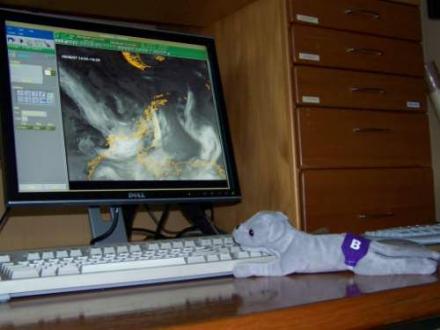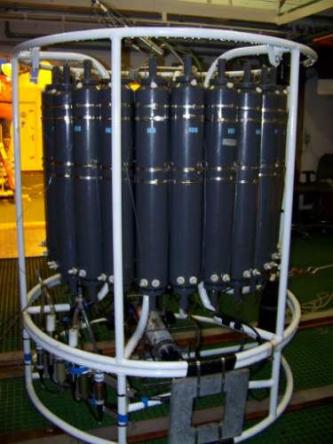**Location: **In the Bellingshausen Sea, approaching Peter I island.
Latitude: 67° 36′ S Longitude: 89° 56′ W Air temperature: - 1.7° C (29° F) Water temperature: - 1.8° C (29° F) Relative humidity: 74.1% Barometric pressure: 932.7 mBar ** Antarctic trivia **(answer at the end of this journal entry): Were there ever dinosaurs in Antarctica?
Soft snowfall all day today as we head for the ice. I promised myself I would see a penguin today, but alas, no luck yet. Really, it’s worse than that…I not only promised myself, I told everyone at breakfast that I was absolutely going to see a penguin today! I better get back to my penguin watching…hard to see them in the open ocean, but I’m giving it a shot.
Later that same day…lots of penguin watching, but no penguins. Even Brent hasn’t seen any penguins, so I guess I shouldn’t feel too bad. People keep asking me if I’ve seen any…I can’t let them down! The visibility is decreasing, the day is coming to a close, and my chances are dwindling.
Ice observations resumed today at noon, but as of 7:00 P.M. we haven’t seen any ice. We released 8 XBTs and 6 Argo floats today. Once we reach the ice edge we’ll be making stops for various data collection protocols, and after the many delays we’ve had in the past month everyone is ready to get to work.
Later that evening…looks like there is no sea ice near Peter I island as we thought, so we’re heading further south until we find ice. I think we’ve changed plans as often as we’ve made them! We rely on satellite imagery to show the locations and extent of sea ice, but sometimes the images aren’t always reliable. Sea ice can change rapidly, so what is seen in an image one day may not be present the next.
 *
*
My greyhound friend consults the latest Terascan ice imagery.
We intended to put the CTD rosette in the water tonight to collect water samples from this area, but when the ship stopped around midnight the swells were too big to safely put the equipment in the water. The CTD rosette consists of a CTD (conductivity, temperature, depth) sensor package attached to a cylindrical frame containing a number of bottles. The device is lowered from the side of the ship and at selected depths the bottles open, fill with water, and then close. At the same time, the CTD sensor package is transmitting data back to the ship for analysis. The scientists on board will analyze this water in a variety of ways – I’ll tell write more about that later.
 *
*
CTD rosette
I’m disappointed to report that there were no penguin sightings today by anyone aboard the ship. Should I be brave again tomorrow and insist that "today is the day,” or should I give up on penguins altogether and just enjoy the stuffed penguin I bought at Palmer Station? I think I’ll be like Scarlett O’Hara in Gone with the Wind and say "tomorrow is another day” – another day of pining for penguins!
**
Answer to today’s Antarctic trivia question:** Were there ever dinosaurs in Antarctica?
Yes, fossils of dinosaurs have been found in the Antarctic. This is one piece of evidence that shows that Antarctica wasn’t always cold and covered with ice. It was once part of a giant continent called Gondwanaland. In fact, Antarctica, South America, Africa, India, and Australia were all a part of this continent. Gondwanaland broke apart and the land masses migrated to their present locations about 180 million years ago.
Marine mammals and sea birds spotted today by Brent: Cape petrel Giant petrel Southern fulmar

